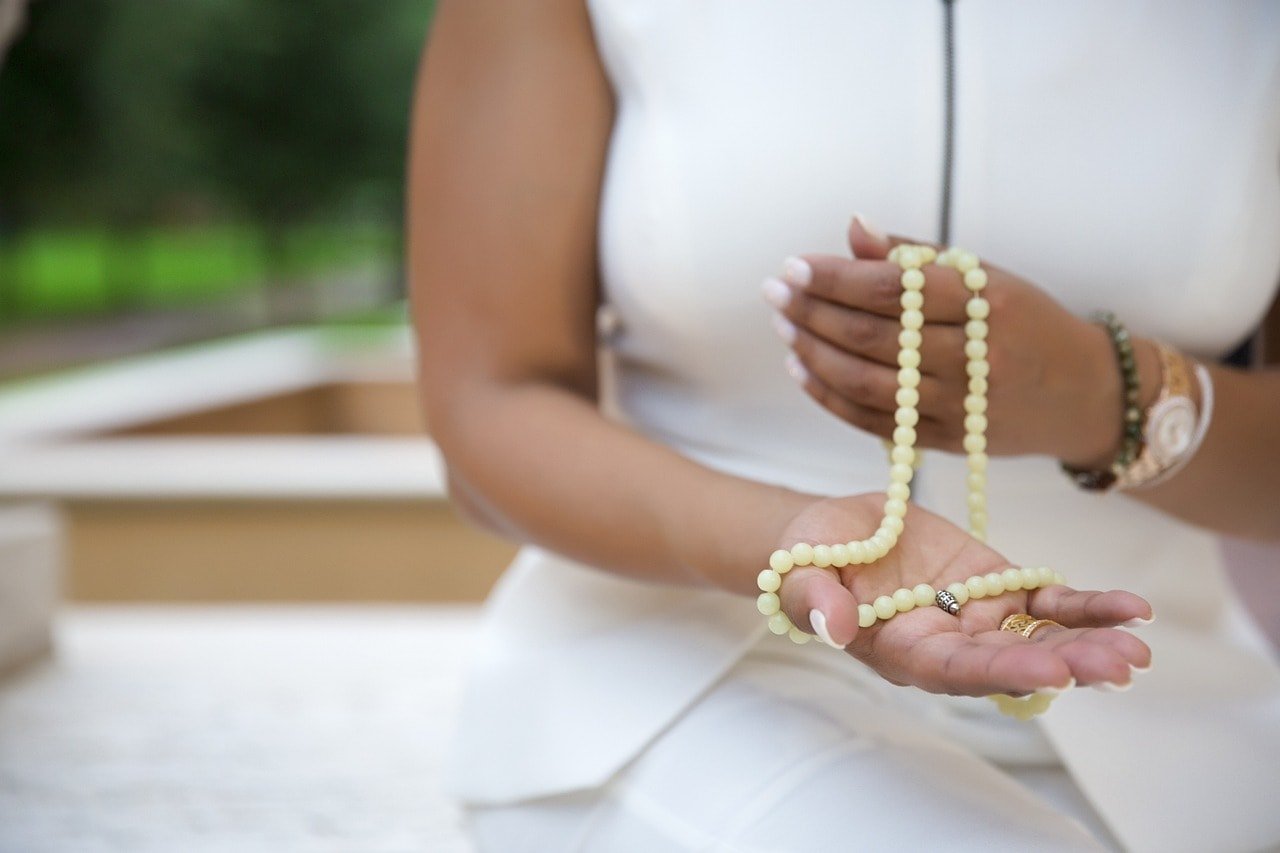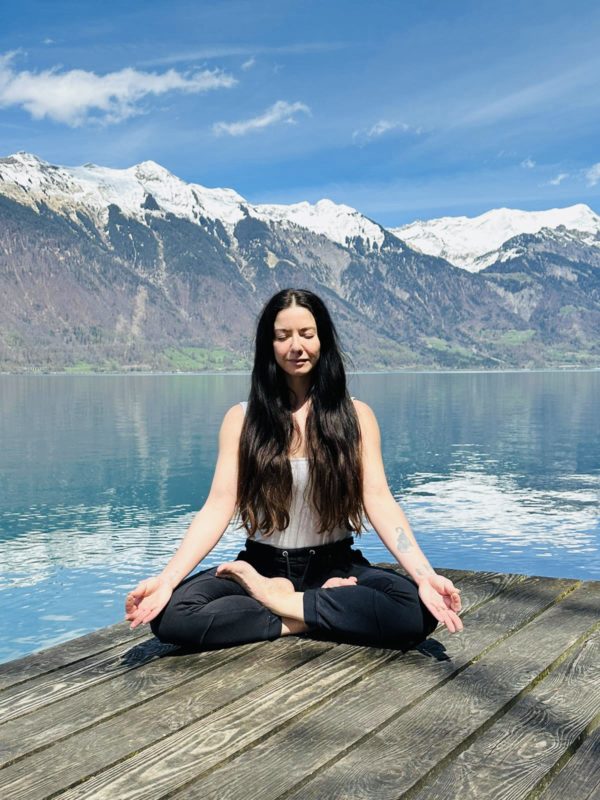[vc_row][vc_column][vc_column_text]
Debunking meditation myths
Many people are put off by the idea of meditation, even though they know it’s good for them. In my many years of teaching and promoting this useful pastime, these are the 7 most common myths about meditation that I’ve heard. There’s plenty of reputable studies out there that prove how beneficial meditation is, and it’s hailed as something that helps many different aspects of daily life. (If you’ve been living under a rock and don’t know of all the benefits, then I suggest you do some research before reading on.) But what use is all the proof of its benefits, if people are reluctant to try it, or give it another go? They’re either under a false impression of what meditation is, how to meditate, or have tried it and decided it’s not for them. Here I’m going to debunk the common myths about meditation, and convince the haters to give it a go.
1. Sitting Crossed Legged
You’ve seen the typical depiction of someone meditating with their legs crossed in lotus pose, sitting on a cushion on the floor. For those who spend much of their day sitting on chairs and toilet seats (instead of squatting as was usual in India), lotus pose is largely unattainable. I even know yoga teachers who can’t get their legs into that position. It requires a level of flexibility in the hips and knees that is just not possible for many people. But this is completely immaterial when it comes to your ability to meditate.
It is much more common these days, even in Buddhist temples, to see people meditating sitting upright on a chair or a small meditation bench. Don’t let discomfort become a constant source of distraction for you, which is going to ruin your meditation session. You need to make sure that you’re comfortable, whether that be sitting on a chair with your back straight and feet on the floor, or even lying down (as long as you’re not risking falling asleep!)
2. It Takes Ages
There is this misunderstanding that you should meditate every day for 30 minutes or more. You even hear of people meditating for over an hour! Of course the longer your meditation sessions are the better, and the more benefits you get from it. But you’re better off starting with just doing 5 minutes a day, than none at all. For those of you who say that you can’t find 5 minutes in your busy day to meditate (when you know how beneficial it is), then you’re the ones that need it the most! Just wake up 5 minutes earlier, or dedicate 5 minutes of your lunch break or evening to meditation. Is it really asking too much?
Then start building up to longer sessions or try doing it for longer on the weekends. What’s important is that you to make it a daily habit, and that you’re ideally in the same place doing it each day. This conditions your mind and body for meditation time. But if you miss a day or have to do it in different locations, it’s OK, just keep doing it! And stop making excuses as to why you can’t find 5 minutes in your day to do something that’s really good for you!
3. Focus On Your Breath
Many people think that meditation is focusing on your breath. As I explain to my students on my 200 hours yoga teacher training course, this is actually quite an advanced form of meditation, and not one I recommend for beginners. Breathing is such a natural and automatic process that most beginners find it ‘boring’ and ‘hard’ to meditate on their breath.
Instead, find a type of meditation with more stimulus, for example using meditation beads, your fingers, a mantra, metta meditation, a visualization or body scan. You could read a yoga philosophy quote and think about its meaning (try the Living Yoga 108 cards) for a contemplation meditation. Better still for beginners is using a meditation app like Insight Timer, which has a lot of different types of meditations for you to try, and see which type suits you. Guided meditations are ideal because you have someone else’s voice as a point of focus to return to when you get distracted. At the beginning you’ll probably need more stimulus than just your breath to keep you occupied and less likely to get easily distracted. Directing your mind to the senses of hearing or touch, means it’s less likely to wander off in thought.
4. Clearing Your Mind
‘I just can’t clear my mind when I try to meditate’ is something that I hear a lot. The point of meditation is not to clear your mind, but to keep it focused on something like your breath, a mantra, visualization, or the voice of the person guiding you. Our brains are programmed to think and our senses are programmed to be aware of our environment. So to ‘clear the mind’ is not in our evolutionary make-up.
Meditation is not a state of emptying your mind. It’s a process of bringing your awareness back to your point of focus each time it gets distracted. So the mind is not actually empty, it’s consciously focusing on something in particular. Eventually, you will have times when you experience what we call Samadhi. This is what people are referring to when they say their mind was clear. More on that in a moment.
5. Getting Distracted
Let’s get something straight, even Buddhist monks get distracted. Whether it’s thoughts that come into your head, a sound or bodily sensation, we are cognitively programed to notice distractions and thoughts. Meditating isn’t about clearing your mind. It is the process of acknowledging when you get distracted, and simply bringing your mind back to your point of focus, like a mantra, your breath, or the voice of the person guiding you.
This might happen 20 time in 1 minute and in another session it may only be once. What’s important is to not get frustrated or annoyed at yourself, or feel like you’re failing. It’s completely normal to get sidetracked, so instead create a friendly relationship with distractions when they come. I tell my students to smile each time it happens:-) The process of acknowledging distractions and bringing your attention back each time, is what’s going to make meditation easier as you keep practicing it. Eventually you will have moments where you feel at one with your point of focus, and these moments will get longer and longer. Not every time you meditate mind you. Even a monk has days where their focus is more broken up.
6. Reaching Enlightening
I’ve found that many people say they want to meditate so that they can reach enlightenment, as if it’s a super power. There’s this idea that when you reach it you’re going to become all-knowing, all-peaceful and your feet will barely touch the ground as you glide through life, with an aura of light around you. Enlightenment, or Samadhi in Sanskrit, is not a permanent state that you ‘reach’ and stay in forever. It’s an experience, and it’s a product of meditation. For some it could take a few months of regular meditating to experience Samadhi, for others it could take years. It’s the most incredible experience whereby you become one with your point of focus, and then there’s nothing, except peace and joy felt by every cell in your body. And then your meditation timer goes off, or a loud sound disturbs you, and you return back to your daily you.
However you now feel joyfully at peace and incredibly energized. It’s why I never meditate before trying to go to sleep. But don’t expect to reach it every time you meditate. Or try to chase after it again in your next session. It will either come or not and both are fine. The regular practice of meditating is the important part, and enlightenment is the ideal destination. Meditation is the car that takes you to that destination, and then you drive back home again after. And if you don’t reach it that session, then you still had a lovely time during the journey.
7. It’s Too Difficult
I hope that points 1 – 5 have shown you that meditation isn’t actually ‘difficult’ and doesn’t have to be ‘boring’. All you need to do is find a type of meditation that suits you and get on with it. It’s as simple as finding a nice voice on a meditation app, sitting down somewhere, and just directing your mind to your point of focus, every single time you acknowledge that you’ve become distracted. Or find a meditation retreat for some added support. Don’t make a big deal about it or put too much pressure on yourself, just give it a go. Like learning to walk, with each attempt, your brain creates neurological links to make the process easier and easier, until you don’t have to consciously work at it. It’s the same for meditation, and the neurological chains get longer each time you practice it. Anything that’s worth while doesn’t come instantly. But meditating is actually very simple. Just set aside some time, stick with it, and reap the benefits. You might even become addicted!
If you have any personal experiences to share or questions, please write them in the comment box below.
[/vc_column_text][/vc_column][/vc_row]













